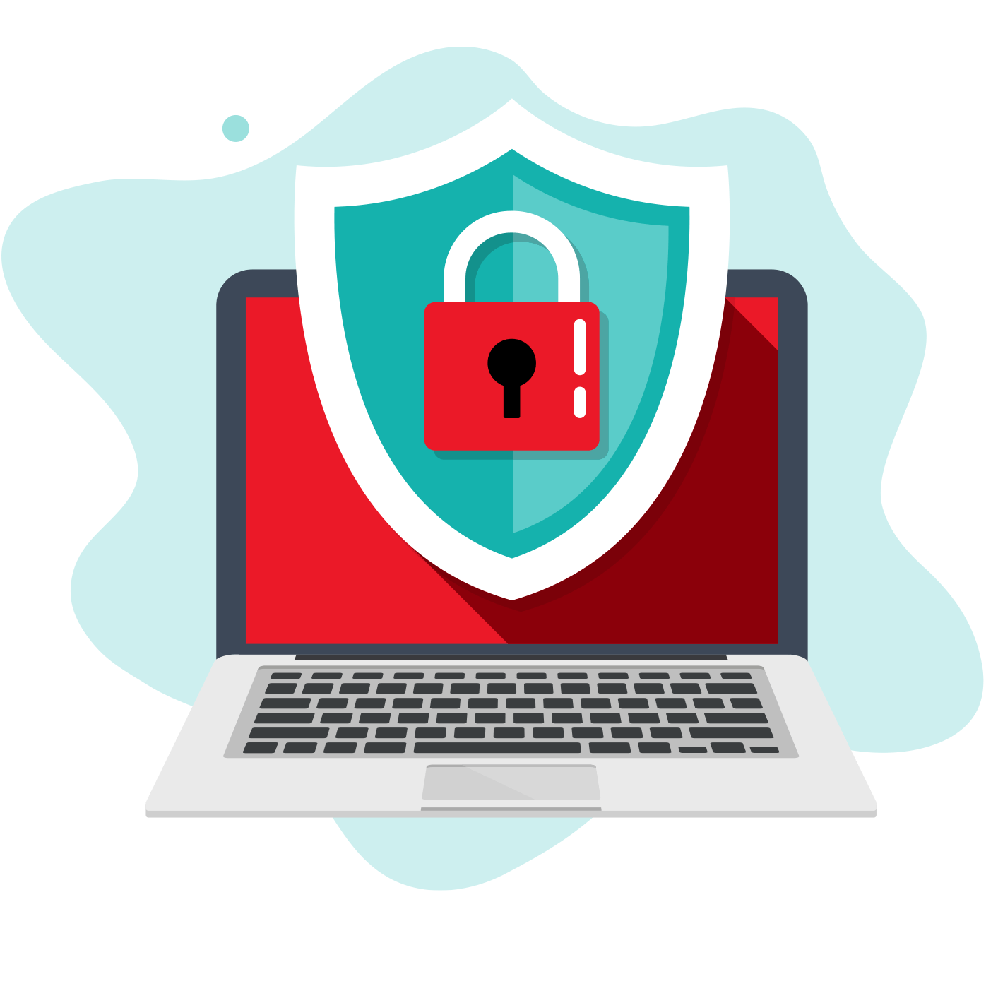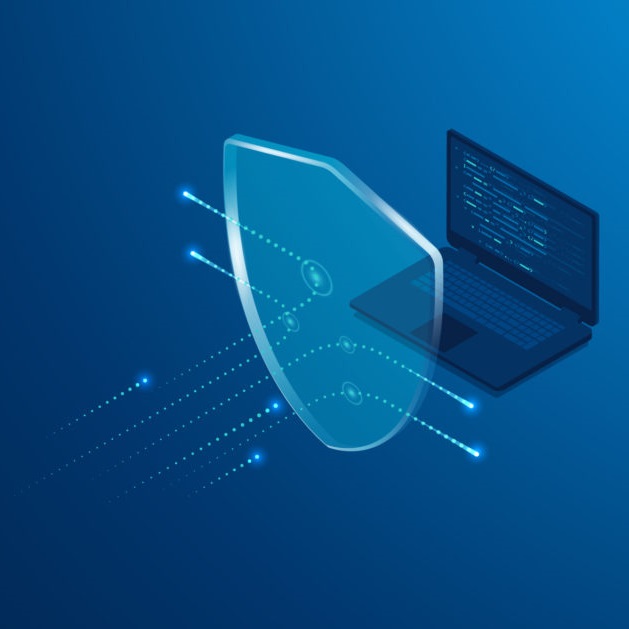The CIA Triad: The Cornerstone of Cybersecurity
At the heart of cybersecurity(computer security), the CIA Triad stands as a guiding principle. It comprises Confidentiality, Integrity, and Availability – the three pillars that form the blueprint for securing data.
Confidentiality: Protecting Data Privacy
Confidentiality is about keeping sensitive data out of the wrong hands. It involves measures such as strict access controls and robust authentication procedures. Employing encryption also ensures that even if data falls into unauthorized hands, it remains unreadable and secure.
Integrity: Ensuring Data Accuracy and Trustworthiness
Integrity focuses on data’s truthfulness and reliability. Mechanisms like hashing and change control validate that data remains unaltered and authentic. It’s essential that only authorized changes happen, preserving the trust in information used for decision-making.
Availability: Guaranteeing Reliable Access to Information
Availability ensures that data is there when needed. This calls for redundant systems and proactive disaster recovery planning to protect against disruptions. Regular system monitoring can pinpoint potential issues, ensuring continuous data access.
Beyond CIA: Expanding the Information Security Framework
While the CIA Triad forms the core of cybersecurity, evolving threats necessitate a broader framework. As cyber risks grow in complexity, the information security community adapts. It’s crucial to understand modern threats and expand beyond the basic principles. This includes adopting new standards and best practices in cybersecurity.
Understanding Modern Threats and Adaptations
In today’s digital age, various cyber threats challenge the traditional CIA. Attackers use sophisticated methods, often targeting systems undetected. Organizations must understand these modern threats. They should adapt their security practices to counter them effectively. Risk management plays a crucial role. It involves identifying, analyzing, and responding to threats.
Incorporating NIST and ISO/IEC Standards
Standards like NIST and ISO/IEC guide organizations to bolster security. They offer frameworks for managing and reducing cybersecurity risks. Incorporating these standards ensures a thorough approach to protecting information systems.
Adhering to these standards also helps maintain compliance with regulations. This can be critical for operating in some industries or regions.
Emphasizing Risk Management and User Awareness
A solid risk management strategy is fundamental to cybersecurity. It helps identify potential security risks and develop plans to address them. User awareness is equally important. Users must understand security best practices and potential threats. Regular training programs enhance users’ ability to spot and avoid security risks.
By expanding the information security framework to include these principles, organizations develop a more robust defense. They become better equipped to handle the evolving cybersecurity landscape. Adapting to modern threats, following established standards, and educating users are key to a secure digital environment.
Introducing the DIE Triad: A Complementary Approach
As the cybersecurity landscape evolves, we augment the foundational CIA Triad with a modern mindset—the DIE Triad. This complementary approach focuses on Distributability, Immutability, and Ephemeral nature, key factors in today’s digital defense.
Distributability: Enhancing Network Resilience
Distributability ensures that a network can withstand attacks or failures. By spreading out resources, systems remain operational even when parts are compromised. This dispersion aids in resisting direct denial-of-service attacks and provides a solid backup during unforeseen disruptions.
Key practices for enhancing network resilience through distributability include:
- Establishing a distributed network architecture, which spreads data across various nodes.
- Utilizing content delivery networks, which serve content from geographically diverse servers.
- Implementing cloud-based services, which offer built-in redundancy and flexibility.
Immutability safeguards data integrity by making it unchangeable once written. This principle thwarts unauthorized modifications, ensuring data reliability. Embracing immutability means attackers can’t alter sensitive information, bolstering your cybersecurity posture.
Key practices for protecting data using immutability include:
- Applying write-once, read-many (WORM) storage methods, which prevent data alteration.
- Using version control systems, which track changes and maintain data consistency.
- Employing immutable infrastructure, where servers and applications are replaced rather than modified.
Ephemeral Nature: Increasing Information Security through Agility
An ephemeral approach embraces the temporary nature of components in the digital infrastructure. By frequently changing systems and data, organizations reduce the window of opportunity for cyber attackers. Ephemeral strategies ensure that compromised systems don’t remain vulnerable for long, enhancing overall security.
Key practices for leveraging the ephemeral nature of information security include:
- Utilizing temporary credentials, which expire after a short period.
- Employing containerization, where short-lived containers handle tasks and then dissolve.
- Automating infrastructure, which rapidly deploys and decommissions virtual resources.
With these principles of computer security incorporated into your defense strategy, you’re better prepared against advanced cyber threats. The DIE Triad expands your cybersecurity framework, adding essential layers for robust protection.
Strengthening Information Security through User Authentication
User authentication stands as a critical defense in securing digital assets. It ensures that only verified users gain access to sensitive data and systems. Authentication practices safeguard against unauthorized access, bolstering overall security.
Access Control Mechanisms and Policies
Access controls are foundational to protecting data privacy. They require users to prove their identity before granting access. Mechanisms like role-based access control (RBAC) assign permissions based on user roles. Policies must be strict to maintain high security.
Multifactor Authentication: Adding Layers of Security
Multifactor authentication (MFA) significantly boosts defense mechanisms. By requiring two or more verification methods, MFA decreases the odds of unauthorized entry. It combines something you know, have, or are for superior security.
Deterring unwelcome access is key to maintaining security. Strong password policies, regular user credential updates, and account lockout systems help keep intruders out. Continuous evaluation of user permissions ensures prompt removal of access when no longer needed.
Data Protection and Privacy Regulations
Protecting data isn’t just about warding off cyberattacks; it also involves complying with data protection laws. In this rapidly digitizing world, regulations like GDPR and CCPA set strict standards for how personal data should be handled by organizations.
Upholding GDPR Compliance
GDPR sets the bar high for data privacy in the EU, impacting global businesses. It demands transparency in data collection and grants individuals rights over their data. Complying with GDPR means organizations must get clear consent from users, provide data access upon request, and report breaches promptly.
Implementing Data Classification and Encryption
Effective data protection starts with classifying data based on sensitivity. Once classified, applying strong encryption to sensitive data secures it at rest and in transit. Encryption acts as a last line of defense, rendering data useless if breached.
The CCPA provides California residents control over personal data. Like GDPR, it gives rights to know, delete, and opt-out of data selling. Organizations must understand these rights and align their operations with the CCPA to avoid hefty fines.
Incident Response and Continuous Monitoring
In the realm of cybersecurity, quick and effective incident response is crucial. It can mean the difference between a minor setback and a significant breach. A comprehensive strategy for incident response and continuous monitoring is a pivotal aspect of a robust security framework.
Crafting Effective Disaster Recovery Plans
Disaster recovery planning is a must for any organization. It involves creating actionable steps to recover crucial systems after a disruption. Key elements include:
- Identifying critical assets to prioritize recovery efforts.
- Setting recovery time objectives that outline acceptable downtime.
- Regularly updating and testing plans to ensure they work when needed.
Utilizing SIEM Tools for Real-time Anomaly Detection
Security Information and Event Management (SIEM) tools are vital. They provide real-time analysis of security alerts generated by applications and hardware. Benefits include:
- Spotting unusual activity quickly to prevent breaches.
- Automating alert responses to reduce manual workload.
- Collecting security data from various sources for a big-picture view.
The Role of Incident Response in Cyber Resilience
The quality of incident response can define an organization’s cyber resilience. Effective incident response teams are prepared with:
- Well-defined response protocols that outline clear actions.
- Rapid containment measures to minimize damage from an attack.
- Regular training and drills that keep the response team sharp and ready.
Incident response teams that follow these steps can mitigate the impact of cyber incidents, keeping data and assets more secure.
Enhancing Cybersecurity Posture with Education and Collaboration
To build a stronger defense against cyber threats, education and collaboration are vital. Encouraging learning and sharing can make a big difference in cybersecurity.
The Importance of Regular Security Training
Regular training keeps users sharp. It helps them spot threats and respond correctly. Updated security practices and threat knowledge are critical for defense. Short, frequent training sessions work best to keep information fresh.
Collaborative Information Sharing Platforms
Sharing threat intelligence is key. Platforms for this enable fast updates on new risks. They support a shared approach to tackling cyber challenges. Use them to stay ahead of attackers.
Engaging in Cybersecurity Communities for Collective Defense
Joining cybersecurity groups fosters a team approach. Exchange tips and experiences for better protection. Together, communities can fight cyber threats more effectively.


